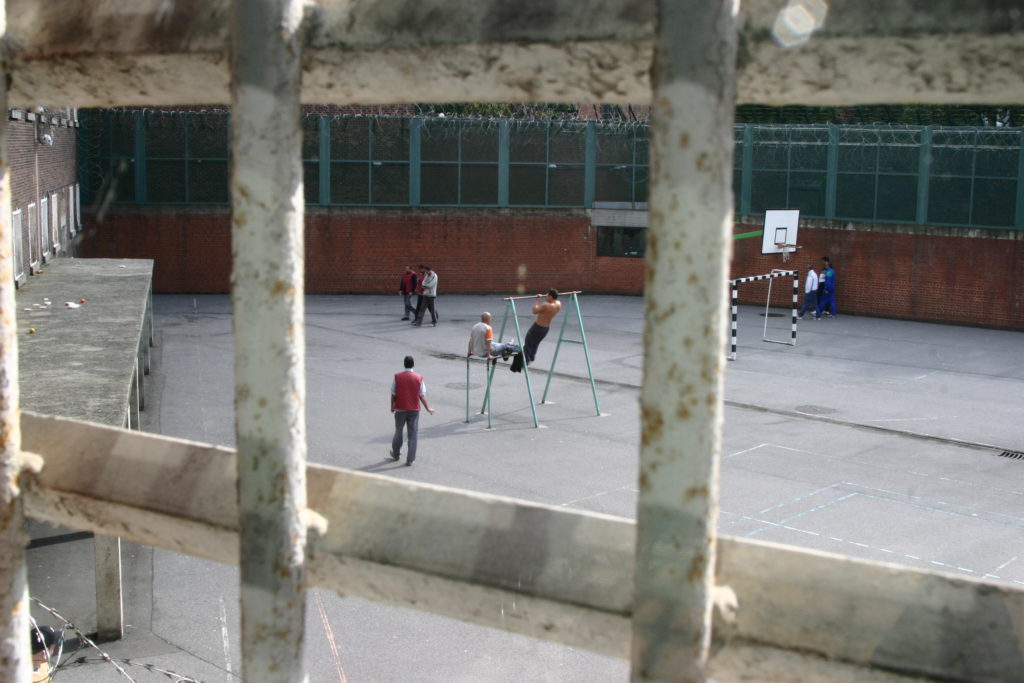The number of persons in Europe subject to community sanctions and measures (CSM) — usually known as alternatives to imprisonment – under the supervision of probation agencies is increasing, according to the Council of Europe annual SPACE II survey, published today, whilst at the same time the prison population is falling.
The survey, which contains data on probationers serving different kinds of CSM such as electronic monitoring, community service, home arrest, treatments, as well as persons in semi-liberty or conditional release, were presented at the Council of Europe Conference of Directors of Prison and Probation Services, which is being held on 21 and 22 May in Ayia Napa (Cyprus).

On 31 January 2018 there were 1,810,357 people in Europe under the supervision of the 41 probation agencies participating in the survey, which represents an overall probation population rate of 169 probationers per 100,000 inhabitants. Comparing the 34 probation agencies that provided this data both for 2016 and 2018, the probation population increased from 1,540,578 to 1,723,652. At the same time, the overall imprisonment rate in Europe fell to 102.5 inmates per 100,000 inhabitants in 2018, according to the Council of Europe Annual Penal Statistics for 2018 (SPACE I) recently published.
The probation agencies with the highest number of persons under supervision were those of Turkey (471 persons per 100,000 inhabitants), Belgium (426), United Kingdom (Scotland) (411), Lithuania (392), Russia (350), Romania (343), Latvia (333), Estonia (331), Republic of Moldova (321) and UK (England and Wales) (317). Other administrations with probation rates higher than the European average were Portugal (300), France (262), Netherlands (251), Czech Republic (248), the Slovak Republic (223) and Malta (217).
The high rates of probationers observed in several countries show the rapid expansion of community sanctions and measures throughout the continent, although with great differences across jurisdictions. In most countries, the probation population rate has become higher than the prison population rate (number of inmates per 100,000 inhabitants), with exceptions such as Serbia, Norway, Switzerland, Bulgaria, Spain (State Administration), Azerbaijan and Russia.

The Czech Republic, Republic of Moldova, Russia and Lithuania are countries with particularly high probation and prison rates, whereas Norway, Switzerland, Finland, Iceland and Monaco have both low probation and prison population rates.
Over the years, the Council of Europe has consistently called on its member states to use alternative sanctions and measures to imprisonment as often as possible because they can effectively contribute to the integration of offenders to society, improve the operation of prisons and prevent overcrowding.
In 2017, the Committee of Ministers of the Council of Europe updated its 1992 recommendation containing the European rules on community sanctions and measures, which advise states to ensure their use in a proportionate and just way, taking into account the offences and the profile of the suspect or the offender. The aim is to encourage states to use CSM as alternatives to imprisonment and not as supplementary sanctions, something that could happen if states start using them for persons who would not normally be placed in detention. The high number of probationers observed suggests that this ‘netwidening’ of the criminal justice system is already taking place in some countries.

Adding the total number of probationers and the total number of inmates in Europe on 31 January 2018, more than three million people were under the supervision of European probation and prison administrations. This can be considered a low estimate of the total correctional population, because it is based on the 37 probation agencies and the 44 prison administrations that provided this information.
Countries with particularly high correctional population rates – above the median European correctional rate of 318 inmates and probationers per 100,000 inhabitants – were Russia (769 inmates and probationers per 100,000 inhabitants), Lithuania (627), UK (Scotland) (548), Republic of Moldova (536), Latvia (528), Estonia (522), Romania (461), UK (England and Wales) (459), Czech Republic (456), Portugal (430), Slovakia (407), France (365) and Azerbaijan (342).
The survey shows that non-custodial measures continued to be seldomly used as an alternative to pre-trial detention: the median proportion of persons placed under supervision of a probation agency before trial was 3.3%.
Foreigners accounted for 7.1% of the total number of probationers among the 22 probation agencies that provided this type of information, whilst they represented as much as 24.7% of inmates in the corresponding prison administrations. This difference could be due to several reasons, including the fact that it is usually more difficult for a foreign citizen than for a national to meet the conditions required to be placed on probation.
On average, roughly 11% of probationers were female in contrast with only 6% in the prison population, as reflected in the SPACE I report on prison populations.
***
The SPACE II annual report is part of the SPACE survey conducted every year for the Council of Europe by the University of Lausanne, under the direction of Professor Marcelo Aebi. The SPACE survey provides an overview of the use of custodial (SPACE I) and community (SPACE II) sanctions and measures in the Council of Europe member states.
Notes:• The data are expressed in median values, which are more reliable than average figures as they are less sensitive to extreme figures.• The 2018 SPACE II survey contains data from the probation agencies of 47 Council of Europe member states except for Albania, Georgia, Hungary, Liechtenstein, North Macedonia, Poland, San Marino and United Kingdom (Northern Ireland). Bosnia and Herzegovina do not have probation agencies yet.• The 2018 SPACE survey contains data on persons under probation supervision as of 31 January 2018, while the 2017 survey contained data as of 31 December 2016.


